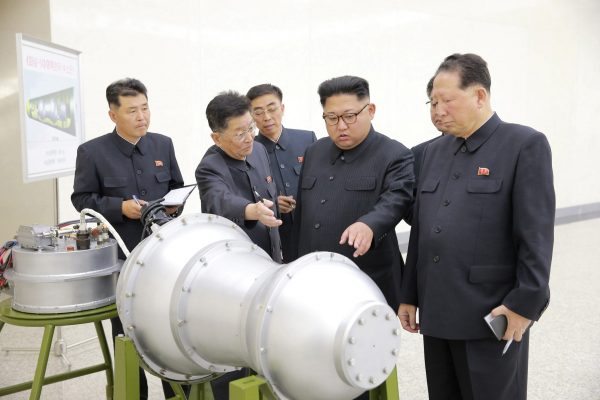The North Korean nuclear crisis as we know it began in the early 1990s, shortly after the collapse of the Soviet Union and the end of the Cold War, when the United States first accused North Korea of diverting nuclear fuel into weapons production. But nuclear confrontation on the Korean Peninsula has a much longer history, going back to the 1950s when the United States considered using the atomic bomb on North Korea during the Korean War and stationed tactical nuclear weapons in the South in 1958. North Korea, especially under Kim Jong-un, has pursued nuclear weapons as a means to deter the United States, which it sees as an existential threat in this prolonged and asymmetrical state of confrontation.
One reason the nuclear issue remains unresolved is that US policy since the 1990s has tended to separate the North Korean nuclear issue from the Korean War confrontation system that gave rise to it. But North Korea’s nuclear ambitions are the consequence, not the cause, of confrontation on the Korean Peninsula. The Koreans, in the North and in the South, understand that, and the inter-Korean ‘Panmunjom Declaration’ of 27 April focusses not on denuclearisation (although that is one of the stated goals) but on the two Koreas’ ‘firm commitment to bring a swift end to the Cold War relic of longstanding division and confrontation’, transforming the ‘unnatural state of armistice’ into a ’robust peace regime’.
Some prominent Americans have gradually begun to see it this way as well. James Clapper, the former US director of national intelligence, acknowledged in The New York Times that asking North Korea to give up its nuclear weapons as a precondition for better relations with the United States — the longstanding policy of several US administrations — is a ‘dead end’. Clapper recognises the security concerns of the North: ‘If we can figure out a way to lead North Korea’s leaders to a place where they don’t feel so threatened, we could move away from the cusp of a cataclysmic war. All of this would benefit us, whether we eliminated their nuclear capacity or not’.
For North Korea the greatest threat to its existence is a hostile United States. North Korea may or may not be able to hit Washington with a nuclear-tipped ICBM. But there is no doubt that the United States could demolish North Korea in minutes with nuclear weapons stationed in the Pacific. North Korea has lived under the continuous threat of nuclear destruction longer than any other country on earth, but Pyongyang has said repeatedly that it would be willing to abandon its nuclear program if the United States dropped its ‘hostile policy’ toward North Korea. This would require a fundamental change in the nature of America’s relations with North Korea and a move away from the system of division and confrontation within which the United States has dealt with Korea since the two Korean regimes were founded in 1948. We may finally be on the verge of such a change, or we may not, but North Korean denuclearisation can only work within the context of this broader systemic change.
What does North Korea want? Based on conversations with North Korean officials, former State Department analyst and long-time North Korea observer Joel Wit explains that for North Koreans, the United States’ dropping its ‘hostile policy’ would mean diplomatic recognition, ending the state of war and lifting trade restrictions and sanctions. None of this would happen immediately, but neither would North Korea offer to give up its nuclear weapons program up front. Rather, the North Koreans prefer a phased, synchronised and comprehensive solution that would fold denuclearisation into a much larger package of diplomatic and economic normalisation.
None of this will be easy to achieve, and is not going to happen after just one summit meeting. But North Korea’s statements have made it clear that Kim Jong-un is ready to shift focus from nuclear weapons to the economy. On 21 April, four months after the launch of the Hwasong-15 missile that Kim claimed achieved his ‘historical goal’ of successful nuclear deterrence against the United States, North Korea announced that it was time to pivot to the economy under a ‘New Strategic Line’. The previous focus was encapsulated in the slogan byungjin, or simultaneous pursuit of military (read: nuclear) and economic advancement. Henceforth, the goal of the regime would be ‘concentrating all our efforts on socialist economic construction’.
It remains to be seen how far North Korea is willing to go in offering to give up nuclear weapons in exchange for recognition and easing of sanctions. It is far from clear that sanctions relief will lead to an immediate and dramatic improvement in the North’s economy, or that Pyongyang would be willing to take the political risk of opening its society and economy to the degree necessary for fundamental change. But the Trump–Kim summit will give both sides a chance to test the intentions of the other and see if they can work out a common program to end their decades-long standoff and achieve a sustainable peace.
Charles K Armstrong is The Korea Foundation Professor of Korean Studies in the Social Sciences at Columbia University, and author of The Koreas.

